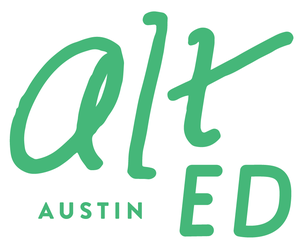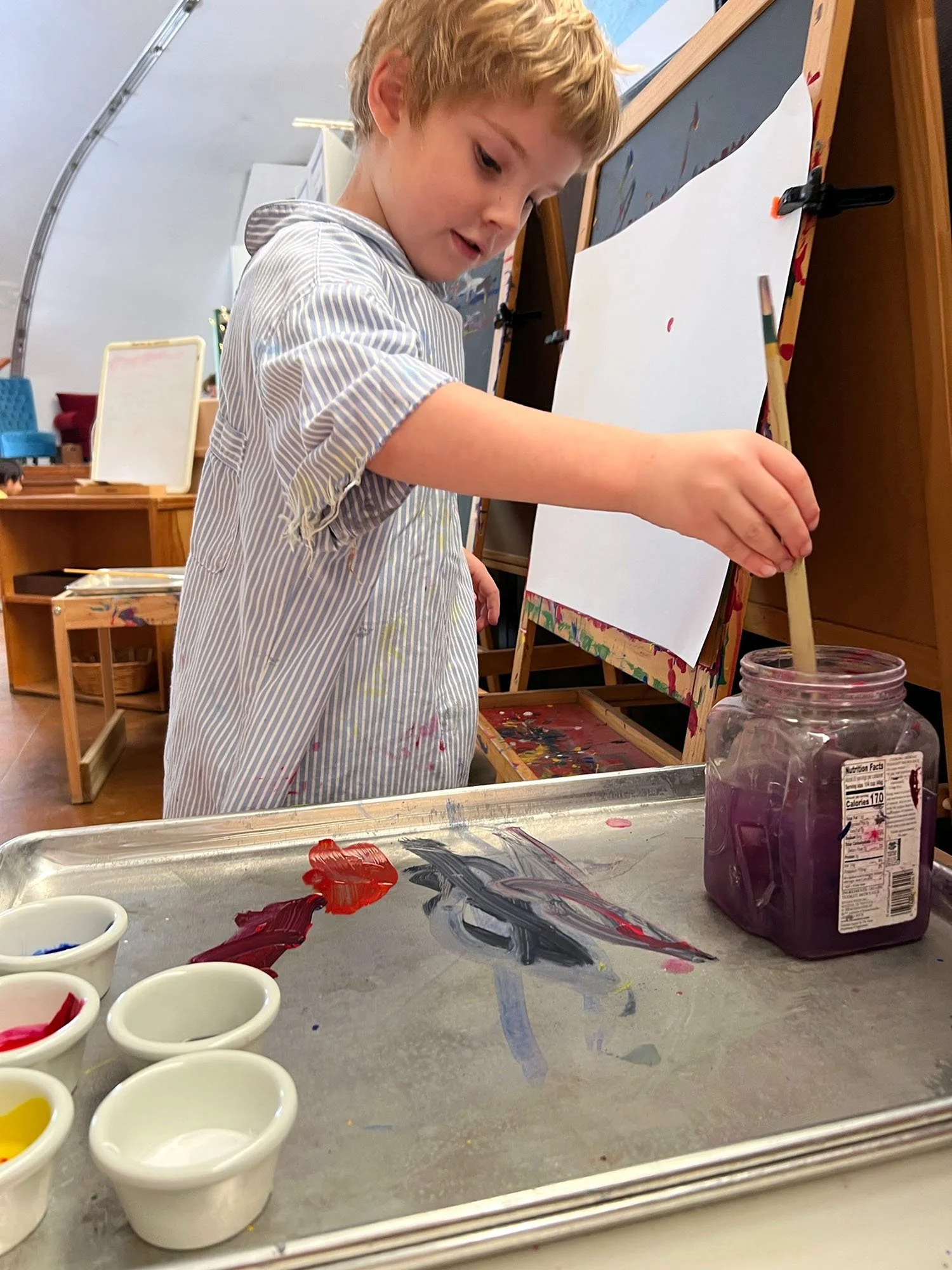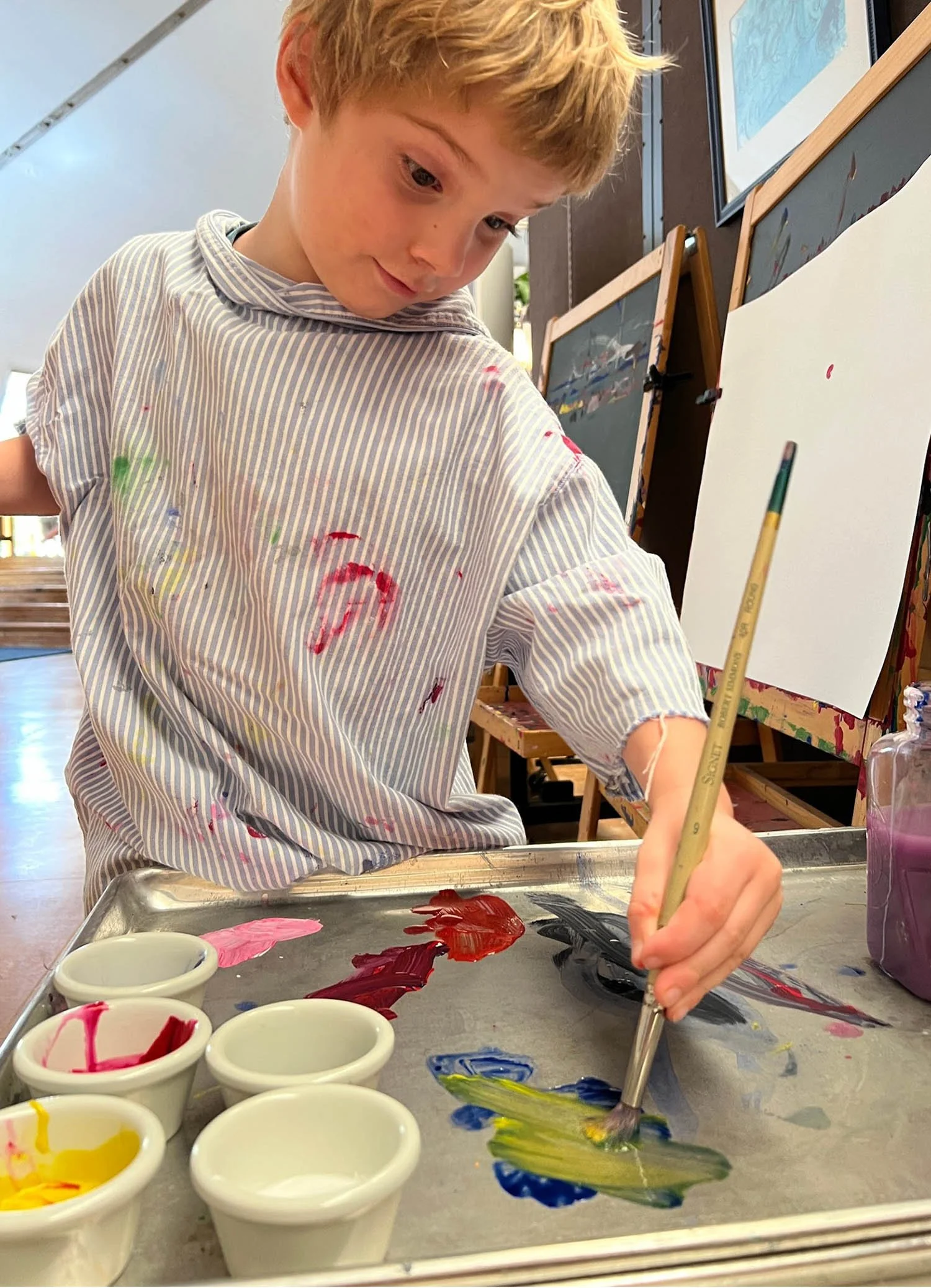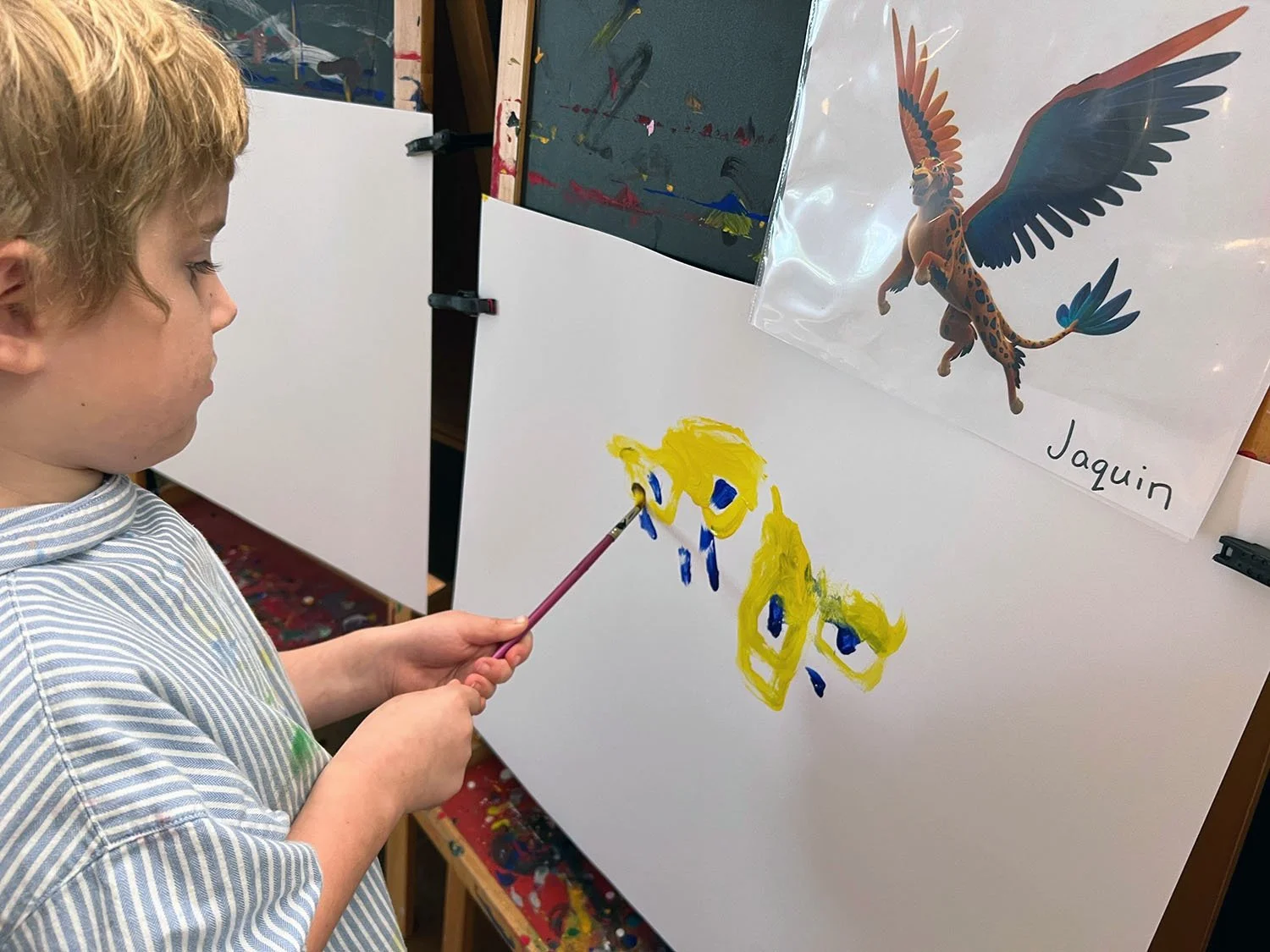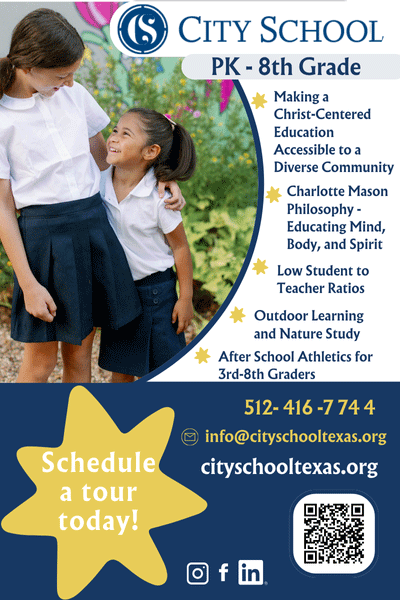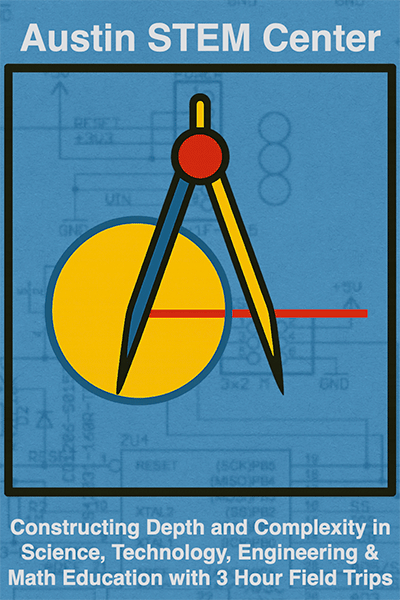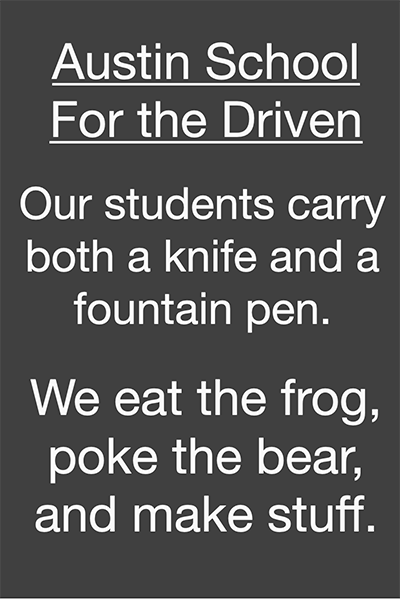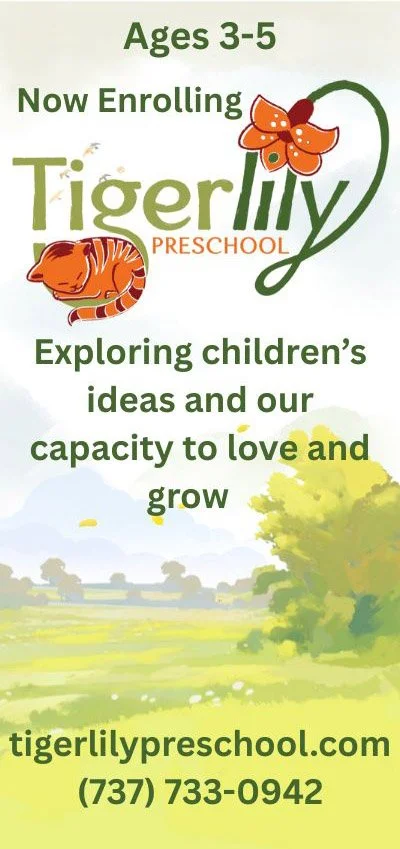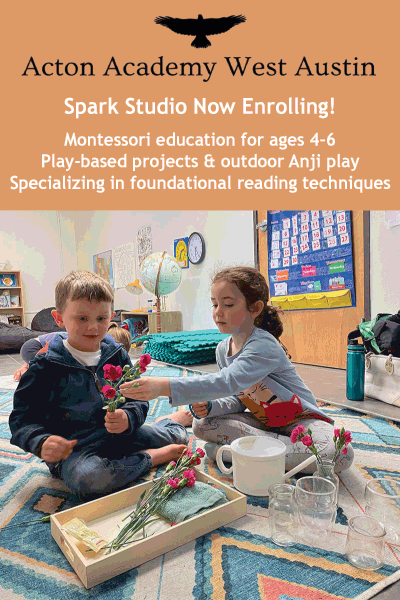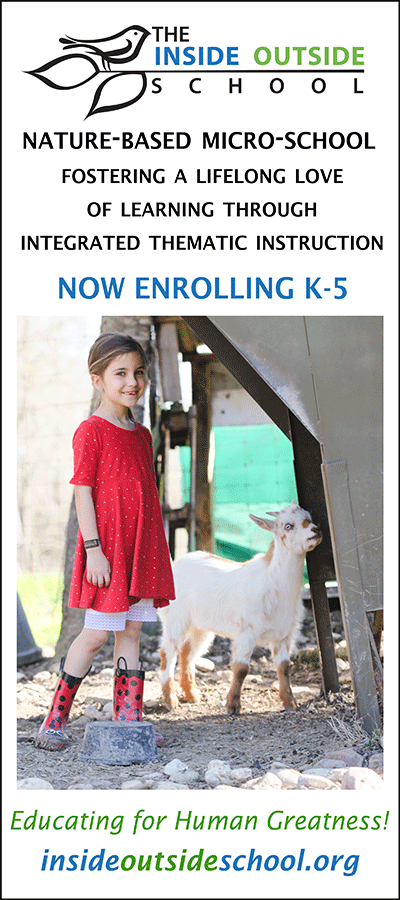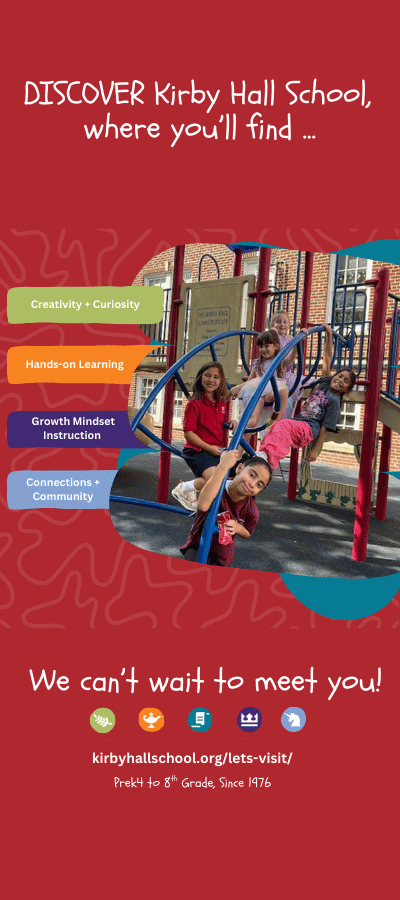“Are you satisfied?”: Learning through repeat experience
/If you’re interested in the Reggio Emilia approach to early childhood education, there’s no better expert to learn from than Marie Catrett of Tigerlily Preschool in South Austin. We’re pleased once again to publish a lovely photo essay in which Marie shows and tells how she artfully helps a young learner gain skill and deeper understanding through repetition of a chosen activity.
At Tigerlily children choose how they spend their time. We’re interested in what the children are interested in and look for opportunities to think more deeply together about their work.
Monday
M chooses to begin his day at the paint easel and is set up with red, blue, yellow, black, and white paint on a big tray. “See what you can make happen here,” is the invitation.
Soon M calls Marie over to show her how delighted he is with his paint water.
M: I made purple right there!
Then he asks: Marie, how do you make pink?
Marie: Hmm, do you want to experiment and see what you can figure out? Or are you asking for a recipe, about how to do it?
M considers.
M: Tell me how to do it.
Marie: Okay, I would try a splooch of white—
M dabs a big brushful of white.
Marie: And then, just a tiiiiny dab of red. See what you think of that.
M is pleased with the pink he makes.
Marie: Mixing on the tray is great because when you make a color you like, you can use the brush to put the color on the paper.
M wants another recipe and asks: How do you make green?
M makes green.
That evening, M’s mom writes: “M’s favorite creature at the moment is called a ‘Jaquin’ from Disney’s Elena of Avalor show. I wanted to share since it’s a harder name/creature to figure out.”
Jaquin from Disney’s Elena of Avalor
Marie writes back: “This is beautiful! You’ll read more about [M] and color mixing in the documentation today. I’m printing Jaquin to have in the classroom in case that inspires more painting or other work for him. Thanks for connecting us with something he finds so special.
Tuesday
Marie shows M the image she’s printed of Jaquin.
Marie: Would you like to try and paint this? You’ve been making such wonderful colors at the paint easel.
Oh yes, M very much would and works for a long, focused time with yellow and blue.
When he declares his work is finished, he puts his painting on the drying rack. Marie notices the drips in what he’s made but does not point them out, taking her cue from his sense of satisfaction. She wonders if he will want to work more on this piece another time and makes a written note to think about the support she might offer the next time he paints, how she might offer help around the frustration of watery paint marks.
Wednesday
Marie and M begin by looking back at yesterday’s work together.
Marie: I remember you working hard on this yesterday. What do you think? Would you want to add more to this? Does it feel finished?
It is M who points to the drips coming down from multiple points.
M: It’s not right.
Marie: Ah yes, I see those drippy places the paint made too.
She looks to him for clarification.
Marie: You don’t want those drip marks?
No, says M.
She’s been pondering the help she might offer him. He might want to enhance the existing image by adding to the paper or using a pair of scissors to cut the image out, leaving the drips behind. She’s careful to center him as the sayer of what he wants. He’s the engine making his work go, and she’s there to lend her knowledge and skills in support of his vision.
Marie: I think you have some options. If you want to work more on this painting, one idea could be to add more paint to paint over the drips. We could also get some scissors and cut out the parts you don’t want to keep and throw those drips away. Another option could be to start a new painting, and I can show you how to get less drips from your brush.
M decides to start a new painting. He will make another Jaquin.
Marie shows him how a wet brush can be very drippy. Wiping the brush off on the inside edge of the water container will help it be less wet.
Marie: And, if we add a sponge to your tray and you dab the wet brush on the sponge after washing it between colors, the brush will be drier too. Today you can give it a try and see what you think.
Marie: Now let’s look at the Jaquin picture again, so you can think about what else you might try when you paint a Jaquin today. Do you see a shape you’ll make to start?
M (touching the blue places along Jaquin’s sides): I will start with the spots.
After adding wings, he says his painting is finished and begins to carry it to the drying rack.
Oh! M realizes, I need to add the feet!
He returns to the easel and adds legs before carrying the paper back to the drying rack a second time.
Oh! M has another part he decides he must add!
M: Now I need to add a tail!
Adding a tail
M and the second Jaquin
M: I like it!
Thursday
M and Marie look at the paintings again. She is thrilled that he’s done repeat work and wants to highlight that.
Children build on what they know when they have the opportunity to repeat their experiences and try a new approach. When you discover something you like to do, there should be lots more time doing that good-feeling thing!
Marie: I know you liked the second Jaquin better, and I can see how much you like thinking about him. You could make even another Jaquin, if you want to.
M starts a third Jaquin. Now he adds even more details to his creature: the Jaquin’s wings have feathers, and the feet are given claws.
M uses the sponge technique to manage the brush marks more skillfully. This refinement has become part of his painting repertoire.
A supporting teacher asks if children are required to wash out their brushes between colors.
No, washing the brush between colors can be taught to a child who is thinking, like M is, about color combinations, and discovering that keeping the yellow as yellow is now an important part of the process. Another painter may be content to mix it all up. We have lots of paint and fresh cups that can come out when a child wants them.
The paint tray meets children exactly where they are. The children grow and bring their ever more expansive selves to the easel, again and again.
Working on his third version today, M peers closely at the original inspiration picture, taking in even more detail now.
M: The paws must be where the claws hide inside.
When the latest Jaquin is finished, M studies all three paintings. Another child, intrigued and present for the very first Jaquin painting M made, comes over to look too. We admire M’s work together.
Marie: Wow, I really see how much thinking you’re doing about your Jaquin paintings! Each time you paint, I see you learning more about how you want to make it. Now that you’ve made three Jaquin paintings, which one do you like the best?
The third one, M decides.
Marie: What makes you feel like this one is your best work?
M: Because of the claws.
—Marie Catrett, Teacher-Founder-Director | Tigerlily Preschool
